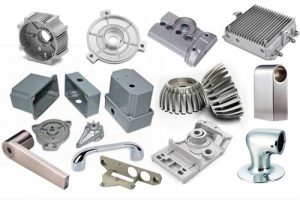Die casting is a metal casting method in which molten nonferrous alloys are poured into dies at high pressure and speed to produce molded items quickly. Aluminum, magnesium, and zinc alloys are the most common materials used in die casting.
What exactly is die casting and how does it work?
Die casting allows for the mass manufacture of thin, complexly formed items with high dimensional precision. Die casting is a mass-production method that is ideal for high-volume objects. Because metal dies and casting equipment account for such a big portion of capital expenditures, the additional cost per item is usually rather low.
Types of die casting:
All die casting processes have the same purpose in mind: to cast a mold with molten metal pumped into it. Different die casting processes can produce better outcomes than other methods depending on the type of molten metal, component geometry, and part size. Hot-chamber and cold-chamber die casting are the two basic types of die casting techniques. There are other variations on these two forms of die casting: Die casting with low pressure, precision die casting in a vacuum, casting with a squeeze die, Die casting with a semi-solid core

Type of alloys used:
Aluminum is extensively used in die-casting, but because it cracks or shrinks at high temperatures, it is frequently alloyed with copper or silicon. Aluminum’s hardness and fluidity are substantially enhanced when it is combined with these metals. Die-casting also frequently uses copper-based alloys. Many of these alloys are extremely robust, making them ideal for mechanical applications. Zinc die casting is a simple technique since it has high strength at ambient temperature, but it can be alloyed with aluminum to boost these properties even further. Zinc is appropriate for hot-chamber casting because it has a lower melting point than aluminum.
Benefits:
The main benefits of precision die casting are Die-casting parts are of high quality and have a long service life.
High consistency: Mass-produced parts have outstanding uniformity.
Die-cast tooling is low-maintenance and allows for quick production.
Die casting can be used to make almost any size, part geometry, surface texture, or lustre.
Installation elements such as studs, drill holes, and bosses can be incorporated into the mold design for minimal assembly.
Final words:
Die casting is a cost-effective manufacturing process that uses reusable metal dies to make items with precise dimensions and crisp definition in huge quantities.
